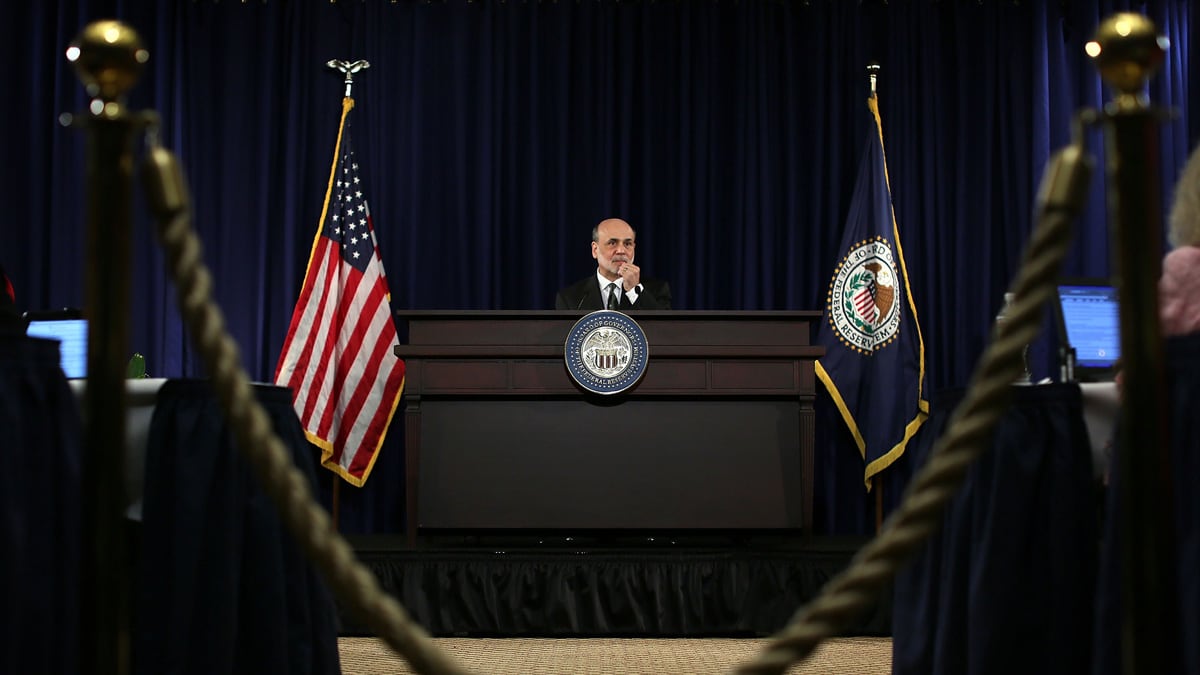The fiscal year for the federal government ends Sept. 30. While the government is projected to run a deficit of $1.1 trillion, at least one part of the government—besides the IRS—will be giving money back to the federal kitty: the Federal Reserve.

With its ability to print money in unlimited amounts in order to buy up government securities and Fannie and Freddie’s debt, the Federal Reserve may be the most profitable bank around. So far this year, the Fed, which turns over its profits to the Treasury department, has earned more than $80 billion for the government and over $5 billion just this month. The Federal Reserve’s complex bailout of the insurance giant AIG, which was wound up in August, turned out to be another profit center for the Fed, and by extension, the taxpayer. The New York Fed, which oversaw a portion of the government’s support for AIG, got some $6.6 billion in addition to the $2.85 billion it received from selling AIG assets in April 2011.
The Fed’s profit has grown with its balance sheet, which now stands at just over $2.8 trillion, compared to $870 billion in August 2007, just before the beginning of the financial crisis. According to the Fed’s most recent report, just under $2.6 trillion of the balance sheet is in securities owned by the Fed. This includes more than $1.6 trillion in U.S. government debt purchased by the Fed in the open market and $853 billion in debt issued by Fannie Mae and Freddie Mac—but now explicitly guaranteed by the federal government.
The profits the Fed makes comes from holding these bonds and receiving interest payments on them. This makes the Fed’s remittances back to the Treasury a bit circular. After all, it’s ultimately U.S. taxpayers making or guaranteeing the interest payments the Federal Reserve receives. On the other hand, those interest payments could be going somewhere else—like to foreign holders of U.S. debt and Fannie and Freddie securities.
The Fed has been turning a profit throughout all the extraordinary actions it has taken to support the economy. In 2011, it remitted more than $75 billion to the Treasury on some $77.4 billion it made in profit. The difference goes to funding the Fed, as well as the Consumer Financial Protection Bureau and the Office of Financial Research. The Fed’s ripe profits are directly due to the massive expansion in the balance sheet—it transferred $79.3 billion to the Treasury in 2010. By comparison, FDIC-insured banks made some $86 billion and $119.5 billion in 2010 and 2011, respectively.
These numbers dwarf earlier Fed profits, which came from its comparatively modest portfolio of government securities—as opposed to its currently swollen balance sheet stuffed full of everything it is legally allowed to buy. Before the days of massive support for the financial industry, insurance company bailouts, and quantitative easing, the Fed’s profits were far more modest, somewhere in the neighborhood of $20 or $30 billion a year.
Expanded purchases by the Fed translate into more money coming in as profits. The Fed’s unique funding mechanism—the ability to create as much money as it needs—allows it to profit from purchases of low-yielding, government-backed bonds. Whereas other banks have to worry about the cost of funding—basically, the interest rates they pay to get people to lend them money—the cost of funding for the Fed is basically zero.
And the size of the Fed’s balance sheet is due to expand even further. The Fed’s newest—and unlimited—bond purchases will mean buying some $23 billion worth of Fannie and Freddie mortgage-backed securities this month and then $40 billion a month more until economic conditions substantially improve.
It makes no sense to attempt to, say, fund the government by printing up money to purchase government debt and then paying yourself back from the interest payments. But the Fed’s ability to make oodles of money from its extraordinary actions does indicate that, at least so far, the taxpayer hasn’t been put on the hook for some of the most aggressive interventions into the economy in government history.
The Fed will, in the future, unwind its holdings and reduce the size of its balance sheet to something like its pre-crisis norm. The fact that it’s able to, at least so far, remit money back to the Treasury shows that it can at least go about its business without putting the taxpayer on the hook. If only all banks could say the same.





